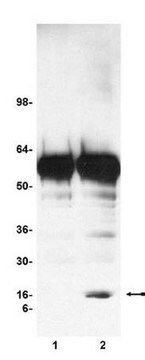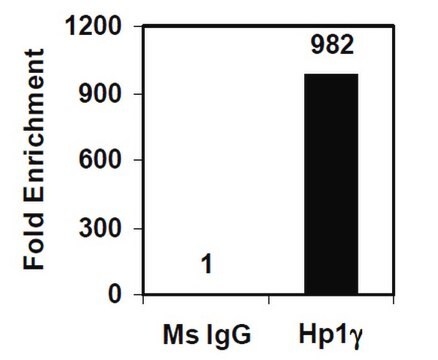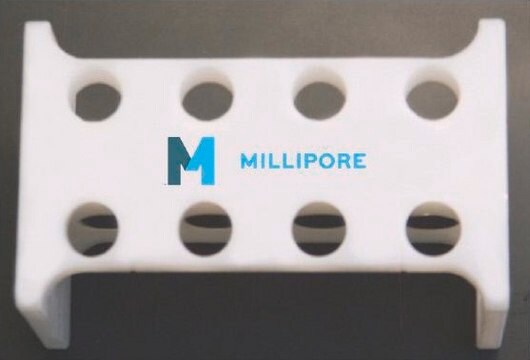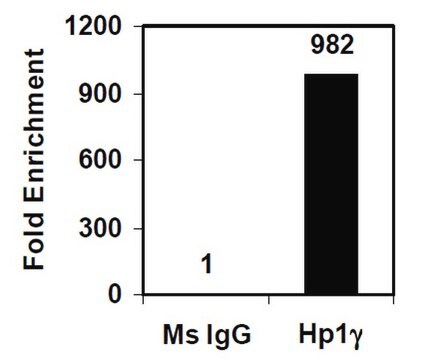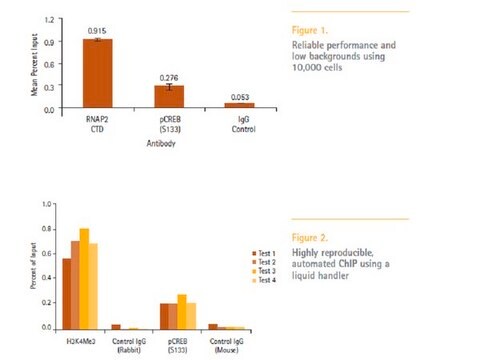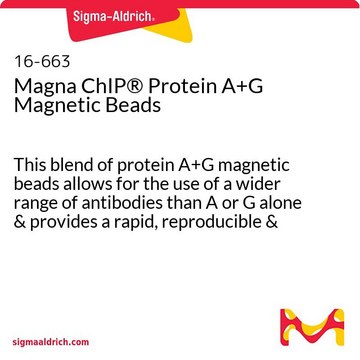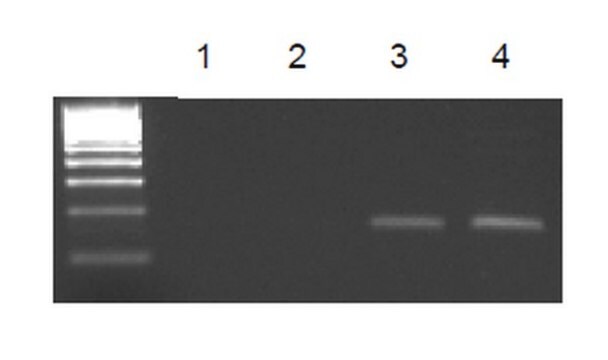CHP1
Imprint® Chromatin Immunopreciptitation Kit
Complete ChIP reaction in 6 hours in flexible strip well format
Sinonimo/i:
Chromatin Immunoprecipitation
About This Item
Prodotti consigliati
Livello qualitativo
Temperatura di conservazione
−20°C
Categorie correlate
Descrizione generale
For Frequently Asked Questions about this kit, please see ChIP Troubleshooting Questions.
Applicazioni
- Suitable for downstream applications
- Individual target characterization to genome-wide profiling techniques
- Characterization of signal transduction pathways
- Verification of ChIp-chIP and ChIP-seq data
Caratteristiche e vantaggi
- Fast—Total protocol time of less than 6 hours making the Imprint kit the fastest on the market
- Sensitive—As few as 10,000 cells required for each ChIP sample
- Convenient—Fewest steps of any available ChIP protocol
- Flexible—Protocols for cells or tissue, and convenient strip-well format for high-throughput applications
- Complete—Includes columns and reagents for DNA purification as well as an integrated protocol for amplification with the GenomePlex technology
Note legali
I componenti del kit sono disponibili anche separatamente
Prodotti correlati
Avvertenze
Danger
Indicazioni di pericolo
Consigli di prudenza
Classi di pericolo
Acute Tox. 4 Oral - Aquatic Chronic 3 - Eye Irrit. 2 - Flam. Liq. 2 - Met. Corr. 1 - Resp. Sens. 1 - Skin Irrit. 2 - STOT SE 3
Organi bersaglio
Central nervous system
Codice della classe di stoccaggio
3 - Flammable liquids
Punto d’infiammabilità (°F)
53.6 °F - closed cup
Punto d’infiammabilità (°C)
12 °C - closed cup
Certificati d'analisi (COA)
Cerca il Certificati d'analisi (COA) digitando il numero di lotto/batch corrispondente. I numeri di lotto o di batch sono stampati sull'etichetta dei prodotti dopo la parola ‘Lotto’ o ‘Batch’.
Possiedi già questo prodotto?
I documenti relativi ai prodotti acquistati recentemente sono disponibili nell’Archivio dei documenti.
I clienti hanno visto anche
Articoli
Epigenetic modifications are thought to occur through two key interconnected processes—DNA methylation and the covalent modification of histones.
Protocolli
Chromatin Immunoprecipitation qPCR for studying gene regulation across conditions.
The Sigma Imprint Chromatin Immunoprecipitation Kit uses a plate based system to allow rapid ChIP assays in a high throughput format
Il team dei nostri ricercatori vanta grande esperienza in tutte le aree della ricerca quali Life Science, scienza dei materiali, sintesi chimica, cromatografia, discipline analitiche, ecc..
Contatta l'Assistenza Tecnica.